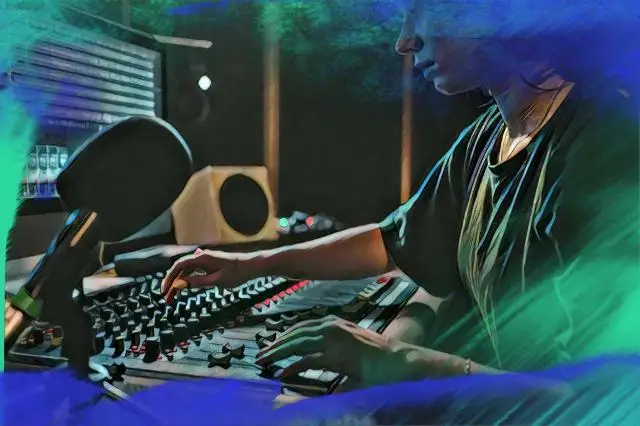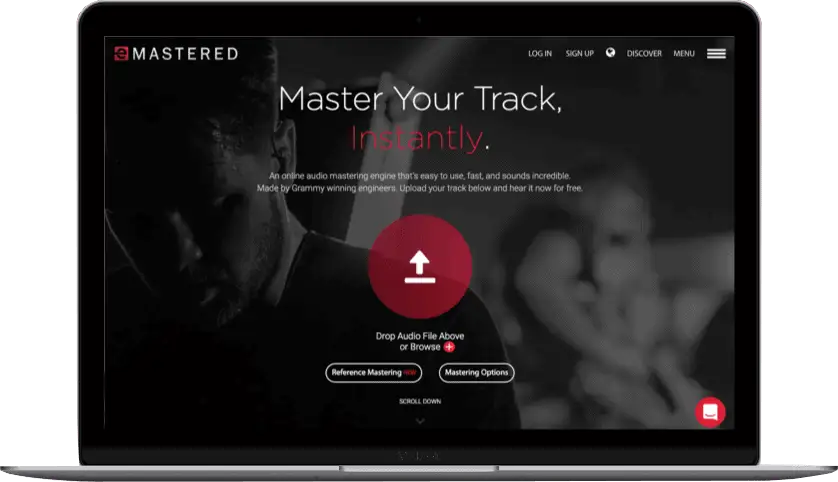There is still much debate about what exactly makes a hyperpop track. Taking influence from genres like nightcore, bubblegum bass, electronic music, and a wide range of avant-garde elements, the sound of hyperpop is not cohesive by any means or agreed upon across music listeners and producers.
With that in mind, the term "hyperpop" might be colloquially equated to a particular set of characteristics. The vocal sound of Charli XCX, the music production instincts and brash drum sounds of legendary producer SOPHIE, and the uptempo, saccharine-filled synth licks certainly come to mind.
If you're interested in learning how to create hyperpop music, you've come to the right place. Below, we'll explore the vital context behind what goes into hyperpop production and share some production methods to help you build your first hyperpop songs using your DAW.
What Exactly is Hyperpop?
Hyperpop is so challenging to define because it pulls from a wide range of influences and communities. The term "hyperpop" itself wasn't necessarily defined or adapted by these communities, rather, set by an editorial Spotify playlist which has become a modern standard for defining and cultivating new genres of music.
This sound is challenging to define, but some common themes include saccharine chord progressions, textured sound design, altered vocals, and engaging, uptempo drumscapes.
The term "hyperpop" comes from an editorial Spotify playlist from 2019 by the same name. Some consider hyperpop as a maximalist view on pop music, where production is taken to the extremes. It's important to note that many of the pioneers of the sound have denounced this genre name.
Adjacent genres to hyperpop include nightcore, glitchcore, bubblegum bass, crunkcore, nu metal and digicore.
Who Are the Pioneers of Hyperpop?
To understand the anatomy of a hyperpop song and what goes into producing it, one of the best things you can do is listen to the ever-expanding genre's greatest influences and pioneers. These artists, though diverse in sound and influence, all have shaped the sonic landscape behind the term "hyperpop".
Rustie
Hyperpop takes influence from plenty of electronic-based artists. One great example is All Night which has a leading synth and trademark pitched-up vocals:
Sleigh Bells
Revolutionary experimental pop group Sleigh Bells laid the groundwork for more adventurous sound design with tracks like A/B Machines :
3OH!3
3OH!3 might be considered part of the proto hyperpop movement, where their sound set the scene for more experimental production from the indie electro scene:
GFOTY
GFOTY which stands for Girlfriend of the Year, was an early adopter of the heavily tuned vocals, textured, energetic beats, all paired with topical visuals and lyrics:
Arca
Arca is an incredible producer and artist who creates some of the most exciting, genre-bending work of today. Her work undoubtedly contributed to what makes hyperpop inspired songs what they are today:
SOPHIE
SOPHIE is the revolutionary and artist who defined the sound of hyperpop with her brave, genre-defying productions. Just take a listen to some of her groundbreaking work that combines heavy hitting sound with pop music sensibility and you'll understand why her art has impacted so many on an insurmountable level. Take a listen to SOPHIE's song Immaterial :
PC Music
PC Music is a record label and collective that was started by well-known electronic producer A.G. Cook. Cook is most famous for his work with Charli XCX, but is largely accredited with assembling the collective that defined the sound design behind what some may call "hyperpop". You can hear this influence in tracks like 2021:
How to Make Hyperpop-Inspired Beats
Are you feeling inspired? Transform your inspiration into fully-fledged hyperpop tracks with these general guidelines (however, keep in mind that experimentation is at the ethos of creating hyperpop music). These are some ideas to keep you on the right track, but by no means should you feel restricted by them.
Drums
As you might expect, hyperpop tracks tend to have a higher BPM to create that energizing, fast-paced sound. Opt for a BPM of 135 or higher and experiment with non-traditional drum sounds and loops. For example, you can look to SOPHIE's use of industrial sounds and noises in lieu of traditional drum noises in tracks like Faceshopping which create invigorating, memorable textures:
Synths
Opt for melodic synths with plenty of texture and bounce to help emphasize the hyperpop style. Look for synthesizers you would use in genres like bubblegum bass. The futuristic sound of these synths blends in perfectly with the hyperpop landscape of this Hannah Diamond song due to the altered vocals and EDM-esque chops.
Vocals
There are no standards when it comes to putting together vocals in a hyperpop beat. In addition to playing with pitch correction and timing of clips, experiment with chopping up vocals or play with the formant of each vocal clip. Ultra-small repeated chops can create interesting textures and glitch effects in your mix.
You can use plugins like SoundToys' Little Alter Boy to easily automate these parameters and produce some cool vocal textures. Most DAWs have a stock plugin for altering the pitch of vocals, but you can also use classic vocal suites like Auto-Tune to get that signature sound.
Bass
Hyperpop beats often have a thumping, hard-to-ignore bass line inspired by the genre's EDM and electronic-influenced roots. Experiment with taking a bass line and adding heavy distortion - the distortion effect will give your bass a chunky, crunchy texture to sit in your mix.
In addition to playing with a distorted bass effect, you might also want to consider layering your bass line with percussion on the downbeat. For example, if your bass line starts at beat one, also have a kick drum, 808, or other noise layered to emphasize the impact of your bass.
Effects and Additional Processing
Effects and experimentation are an essential part of the process whenever you create hyperpop music. Run your instruments, vocal lines, and any percussion through multiple layers of processing and hear what happens.
For instance, perhaps you run a vocal pass through pitch-shifting and delay. Then, take that delayed vocal and convert it into vocal chops. The point is to allow yourself to be curious and experiment by layering effect after effect. Hyperpop music is excellent at keeping listeners engaged, so don't forget to play with stereo placement too. Automation is your friend!
Hopefully, this beginner's guide to making hyperpop points you in the right direction towards making this music. While the genre is fairly loosely defined, the influence of its pioneering producers and artists is palpable in the pop music landscape of today and tomorrow. Enjoy building your own hyperpop beats to share with your fellow music lovers.





